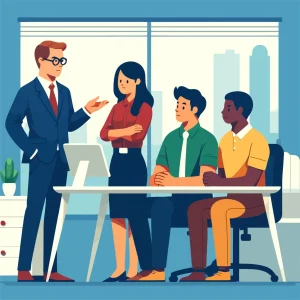Introduction
Understanding customer experience is essential for businesses that aim to attract and retain customers, drive value, and build a competitive edge. The term refers to the sum of all interactions a customer has with your brand, whether it’s seeing your advertisement, browsing your store, or seeking advice from your team. These touchpoints define how customers perceive your brand and influence their loyalty and spending.
Every point of contact with a brand impacts customer experience. A poor interaction at any stage may lead a customer to choose a competitor. Research has shown that 87% of consumers will not return to a business after a negative experience (RightNow Technologies and Harris Interactive). Understanding, measuring, and improving customer interactions can provide powerful insights that allow businesses to make data-driven changes that boost loyalty and retention.
When a customer becomes loyal, it’s often due to the quality of their experience rather than the product alone. Good experiences foster loyalty by helping customers reach their goals in a smooth, enjoyable way. Studies show that acquiring a new customer can cost five times more than retaining an existing one (Satmetrix, Bain & Co). A mere 2% increase in customer retention can impact profits as much as a 10% reduction in costs! Here’s how to understand, measure, and improve customer experience effectively in your business.

1. Understanding Customer Experience for Strategic Impact
Having a deep understanding of the customer provides direction for decision-makers. When analysed correctly, these insights allow businesses to:
- Attract more customers
- Set optimal product pricing
- Increase the frequency and amount customers spend
- Enhance sales and reduce costs
- Refine customer service approaches
To create a successful CEX strategy, aim to convert today’s potential customers into tomorrow’s loyal advocates who regularly engage with and recommend your brand.
Defining Customer Touchpoints
Each interaction, or “touchpoint,” with your brand shapes the overall customer journey. Touchpoints include various stages of the journey, from initial discovery through advertisements to interactions in-store or online. Positive touchpoints at every stage contribute to stronger loyalty, while negative experiences risk customer loss. To learn more about this click here.

2. Measuring Customer Experience for Better Insights
To make informed improvements, businesses must develop a strategy to measure customer experience across all touchpoints. Tracking scores over time enables businesses to gauge the effectiveness of changes made and adjust as needed.
Using Surveys to Capture Satisfaction Data
Surveys remain one of the most effective ways to gather data on customer experience. A professionally designed survey distributed to a representative sample of customers can provide a comprehensive view of satisfaction levels across touchpoints. Surveys can be delivered through multiple channels—online, over the phone, via mobile, at POS systems, or even in person as customers exit a store.
To capture specific insights, ask customers to rate their experiences on factors such as service quality, product availability, and store cleanliness. It’s also beneficial to include KPI questions about overall satisfaction, likelihood to return, and willingness to recommend. These metrics serve as valuable benchmarks to track trends.
The Role of Professional Research in Measuring Experience
Engaging a market research consultant or agency to assist with survey design and data analysis is a wise choice for businesses aiming to gather reliable customer experience insights. Professionals can apply advanced statistical techniques to extract meaningful insights and recommendations from the data, enhancing the accuracy and value of survey results.

3. Improving Customer Experience for Enhanced Loyalty
Once you’ve measured customer experience, the next step is improvement. A key component of enhancing the customer journey is ensuring that all team members understand its importance and are actively engaged in the process.
Engaging Employees in the CEX Strategy
To implement a customer-centric strategy, involve employees from the beginning. Holding discussion meetings with staff before launching your customer experience initiative can provide valuable perspectives and align everyone with the business’s strategic vision. Employees who understand the impact of customer experience scores are often more motivated to contribute positively, especially when their performance is incentivised based on customer satisfaction and advocacy rather than just sales targets.
Analysing Key Drivers of Customer Satisfaction
With a well-designed survey, businesses can identify key drivers of customer satisfaction across touchpoints. This is where a market research consultant’s expertise comes in. They can highlight which aspects of the experience need improvement and which areas have a more minor impact. Focusing on high-impact areas ensures resources are used wisely, improving satisfaction where it matters most. Additionally, open-text comments from customers provide context for satisfaction or dissatisfaction, guiding future strategies. To learn more about data analysis techniques click here.

Conclusion: Building a Customer-Centric Business Model
A structured customer experience programme offers invaluable strategic direction for business leaders. By continually measuring and improving, businesses can make well-informed decisions that foster a customer-centric approach. This commitment to enhancing customer experience not only supports long-term loyalty but also contributes to sustainable business growth.
For professional assistance in designing and implementing a comprehensive customer experience programme, contact us at Robust Insight. Our team specialises in developing strategies to help businesses understand, measure, and improve their customer experience.
Working with a market research consultant who adheres to the Market Research Society (MRS) guidelines ensures that your customer experience insights are gathered ethically and meet industry standards.








